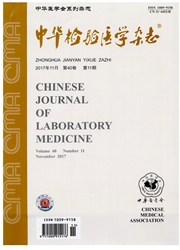

 中文摘要:
中文摘要:
外伤性心肌梗死(TMI)是指在受到创伤或打击后出现心电图异常变化和心肌血清酶学或肌钙蛋白升高,并符合急性心肌梗死(AMI)动态演变的疾病。交通事故导致的心脏钝挫伤(BCI)发生TMI的风险较大。TMI的发病机制可能为外伤导致冠状动脉(冠脉)内膜破裂、夹层;已知粥样硬化斑块破裂;冠脉痉挛或破裂;外部血肿压迫冠脉;创伤后应激状态促进血栓形成等。TMI临床表现不典型,但心电图和心肌酶学指标可见动态变化。在治疗上,目前认为早期再灌注治疗可有效挽救濒死心肌,并改善心功能。经皮冠脉介入治疗(PCI)仍是TMI的首选治疗方式,但应充分考虑出血风险,制定个体化治疗方案。结合国内外发表的相关文献,从TMI的发病机制、临床特征、诊断及鉴别诊断、治疗等方面进行综述,为促进TMI临床诊治及进一步开展相关研究提供参考。
 英文摘要:
英文摘要:
The traumatic myocardial infarction (TMI) refers to the abnormal electrocardiogram changes and myocardial enzymology or serum troponin rise, and it is in line with the dynamic evolution of acute myocardial infarction (AMI) disease after trauma. Studies have shown that blunt cardiac injury (BCI) caused by traffic accident is at a higher risk factor of developing TMI. The pathogenic mechanisms of TMI usually consists of the following aspects: trauma caused coronary artery inner rupture or dissection; atherosclerotic plaque rupture; coronary spasm or rupture; external hematoma squeeze coronary artery; post traumatic stress state promoted thrombosis. The clinical manifestation of TMI is not typical, but its electrocardiogram and myocardial enzymology indexes show dynamic changes. A current view on the treatment of TMI is that early reperfusion therapy can effectively save the dying myocardium, and improve cardiac function. Percutaneous coronary intervention (PCI) is still the first choice for treatment of TMI, but hemorrhagic risk should be considered sufficiently, and it is necessary to establish a personalized treatment plan. We reviewed and summarized the relevant literature published both at home and abroad with focus on the pathogenic mechanisms of TMI, and on its clinical features, diagnosis and treatment in order to provide the reference for further research and clinical treatment of TMI.
 同期刊论文项目
同期刊论文项目
 同项目期刊论文
同项目期刊论文
 期刊信息
期刊信息
